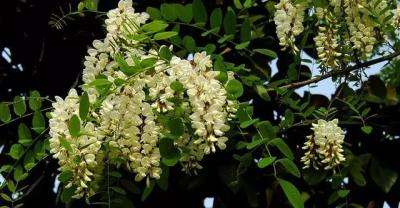65 species of Xiangke plants you must know when you are gardening
1. The aromatic substances secreted by cloves, mint, Robinia pseudoacacia and laurel affect the elongation and growth of adjacent plants.
two。 The secretions of elm trees can stunt the development of oaks.
3. Where the root system of elm reaches, the growth and development of grape is seriously inhibited.
4. The volatile oil of cypress contains ether and trioxane, which can slow down the respiration and stop the growth of the surrounding plants.
5. Walnut, stone pine, spruce and silver fir can affect and poison many plants around them.
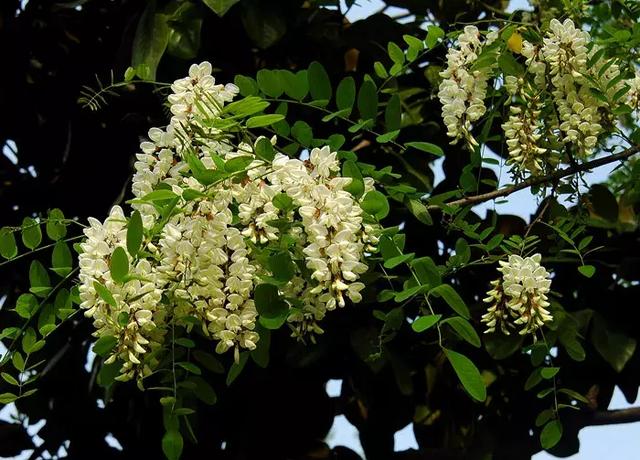
6. The leaves and roots of walnut and walnut release, secrete water-soluble glucose juglone, and produce more toxic juglone after hydrolysis and oxidation in the soil, resulting in damage or death of surrounding pine, apple, birch, potato, tomato and many herbaceous plants under the tree.
7. The pathogen of walnut deciduous anthracnose can cause a large number of fruit trees to lose leaves.
8. Robinia pseudoacacia has a strong inhibitory effect on many kinds of fruit trees, resulting in no fruit all the year round.
9. When the residual roots of peach trees are decomposed and hydrolyzed in the soil, they will produce a large number of highly toxic substances such as potassium oxide and benzaldehyde, which inhibit the root respiration of fruit trees and directly kill the young roots of fruit trees, so it is not suitable to be mixed with apple, pear, Hawthorn and so on.
10. The needles of Japanese Korean pine are drenched in rain and fog to produce harmful substances, making it impossible to grow crops near the pine forest.
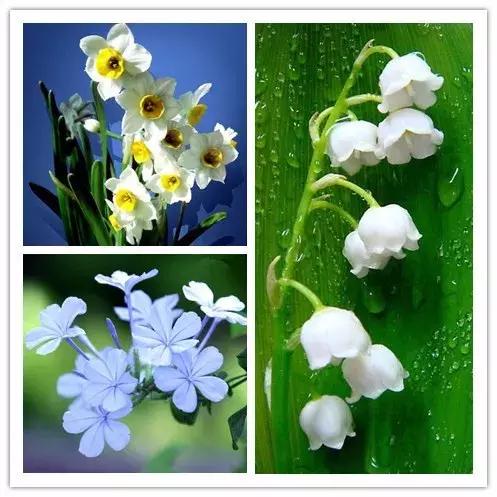
11. Lilies of the valley and cloves together, cloves wilt.
twelve。 The lily of the valley and the daffodils together, both lose.
13. Lilacs and daffodils together endanger the life of daffodils.
14. Cloves, violets, tulips and don't forget my grass together will lose both sides.
15. Ripe apples, incense burns and potted flowers that are budding or blooming will make the flowers die early.

16. Elm leaves, oaks and Betula platyphylla cannot be interplanted.
17. There is no interplanting between Fructus Aurantii and spruce.
18. Oaks and birches crowd out pines.
19. The water leachate in the oak canopy led to the poor growth of the lower shrubs.
20. Eucalyptus leached out chlorogenic alkali, and there were almost no weeds under the forest.
21. Robinia pseudoacacia can inhibit the growth of many weeds.
twenty-two。 The volatile oil from the secretions of peppermint and Artemisia hinders the growth of legume seedlings.
23. The grapes near the tomatoes do not grow well.
24. The underground volatiles and root exudates of tomato can inhibit the growth and development of seeds and seedlings of all kinds of vegetables.
25. Black pine and buffalo grass can not be mixed, because they are deep-rooted plants, will compete with each other for groundwater, resulting in poor growth of pine trees.

twenty-six。 Spruce has the effect of autotoxicity, resulting in continuous cropping obstacles.
twenty-seven。 Pine, oak and chestnut can not be mixed, which will induce Pinus tabulaeformis column rust.
twenty-eight。 Pinus tabulaeformis, Pinus massoniana, Pinus taiwanensis and other two-needle pine can not be mixed with Paeoniaceae, Radix scrophulariae, Ranunculaceae, Verbenaceae, Longan, Impatiens, Agaricaceae, Pinus massoniana, Pinus tabulaeformis and other plants, which will induce two-needle pine bract rust.
twenty-nine。 Pinus tabulaeformis and Phellodendron amurense can not be mixed, which will induce needle rust of Pinus tabulaeformis.
thirty。 Carthamus tinctorius, Pinus elliottii, Pinus elliottii and other five-needle pine can not be mixed with Camellia oleifera and Rosa roxburghii, which will induce five-needle pine bract rust.
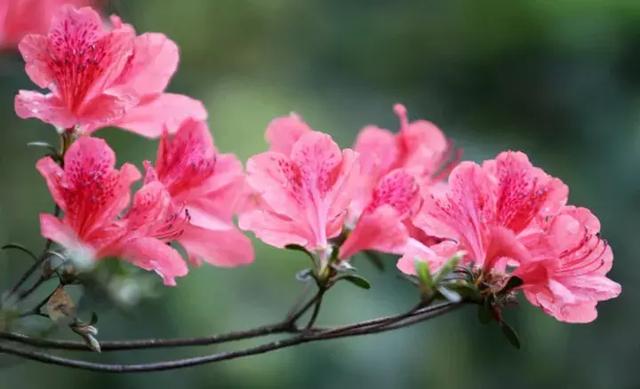
thirty-one。 Spruce and thick plum can not be mixed, which will induce spruce thick plum cone rust.
thirty-two。 Spruce can not be mixed with rhododendron and trumpet tea, which will induce spruce leaf rust.
thirty-three。 Picea koraiensis can not be mixed with rhododendron, which will induce leaf rust of Picea koraiensis.
thirty-four。 Qinghai spruce can not be mixed with Qinghai rhododendron, which will induce leaf rust of Qinghai spruce.
thirty-five。 Juniper can not be mixed with apple, pear, Hawthorn, mountain stator, stick stem crabapple and so on, which will cause juniper rust and pear juniper rust.
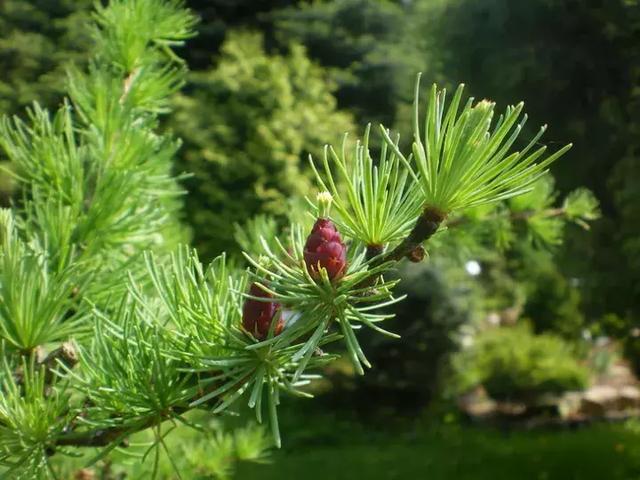
thirty-six。 Larix gmelinii and poplar can not be mixed, which will induce leaf rust of green poplar.
thirty-seven。 Weeping willow can not be mixed with Corydalis, which will induce weeping willow and rust.
thirty-eight。 Robinia pseudoacacia can not be planted in the apple and pear area, because Robinia pseudoacacia is not only the overwintering place of apple and pear anthracnose, but also the intermediate host of root purple plume, and it is easy to attract apple, pear and peach bugs.
thirty-nine。 The mixed planting of Zoysia paniculata and Tripterygium wilfordii will induce the rust of Zoysia mandshurica.
forty。 Korean pine ball aphid is easy to occur when Korean pine and spruce are mixed.
forty-one。 Larch ball aphid is easy to occur when larch and spruce are mixed.
forty-two。 Abies heterobrica aphid is easy to occur when fir and spruce are mixed.
forty-three。 Poplar trees are adjacent to fruit trees, which are prone to poplar ulcers and fruit tree ring disease.
forty-four。 Planting paulownia around fruit trees can easily lead to purple stripes in the roots of fruit trees and yellowing and drying up of leaves.
forty-five。 Mulberry, structure, oak and small leaf are planted around poplar and apple planting areas, which can easily lead to the occurrence of mulberry longicorn beetles, because the adults of mulberry longicorn beetles must be nourished after emergence, and they can lay eggs only after feeding on mulberry, structure, oak and small leaf. Only eating branches and leaves of Populus tomentosa and apple can not lay eggs.
forty-six。 Elm trees should not be planted around citrus orchards and vineyards because elm is a favorite tree species for longicorn beetles and orange brown longicorn beetles.
forty-seven。 Oleander peach blossom for too long easy to make people drowsy, intelligence decline, induce respiratory tract, digestive system diseases secreted milky white liquid, contact for too long easy to poison.
forty-eight。 The fragrance of rose flowers can make people feel uncomfortable, suffocate and have difficulty breathing for a long time.
forty-nine。 Tulip flowers contain a toxin that can cause dizziness, poisoning, sparse eyebrows and accelerated hair loss when exposed for too long.
fifty。 Daffodils juice can make the skin red, bulbs contain Latin toxin, vomiting after eating.
fifty-one。 The whole plant of Yumeiren is poisonous, and the fruit is more toxic.
fifty-two。 The whole plant of poinsettia is poisonous and the white juice makes the skin red and swollen.
fifty-three。 Horseshoe lotus contains alkaloids, which are poisonous and cause coma after accidental ingestion.
fifty-four。 The milk of tiger thorn plum is poisonous and makes people unable to sleep.
fifty-five。 The five-colored plum blossom leaves are poisonous and cause diarrhea and fever after accidental eating.
fifty-six。 The whole plant of Shanshu bean is poisonous and it is dangerous to eat its red fruit.
fifty-seven。 Phyllostachys pubescens contains Phyllostachys pubescens, which is poisonous and causes diarrhea and fever after being eaten by mistake.
fifty-eight。 Mimosa has mimosa alkaloid, too much contact will cause general discomfort, hair yellowing and shedding, sparse eyebrows.
fifty-nine。 Impatiens has a promoting effect on nasopharyngeal and esophageal diseases.
sixty。 Contact with the secretion of pelargonium villi can cause skin allergies and itching in some people.
sixty-one。 Nocturnal discharge makes people mentally excited and difficult to fall asleep. It can also make people with high blood pressure and heart disease feel dizzy, depressed, uncomfortable, cough, wheezing, and even aggravate their illness.
sixty-two。 Evergreen contains poisonous enzymes, and the juice of stems and leaves is strongly irritating to the skin. After being bitten by mistake, it will strongly stimulate the oral mucosa, cause throat edema, and even vocal cord paralysis.
sixty-three。 The strong fragrance of lilies and orchids can easily cause dizziness, insomnia, cough, asthma and instant dullness.
sixty-four。 Cactus and cactus ball plants, the thorns on the leaves are toxic, easy to cause skin inflammation, swelling, pain and itching, unbearable pain.
sixty-five。 Five-colored plum, swallow palm, tortoise back leaf, tiger thorn, overlord whip, Wenshu orchid, silver edge Cui, Yu Mei, Lycoris, tequila, Phoenix hyacinth and other pollen or pulp are toxic to people.
Editor: Ma Ming
Related
- Wuhan Hospital Iron Tree Blooming Result Was Instantly Frightened by the Gardener Master
- Which variety of camellia is the most fragrant and best? Which one do you like best?
- What is the small blue coat, the breeding methods and matters needing attention of the succulent plant
- Dormancy time and maintenance management of succulent plants during dormancy
- Minas succulent how to raise, Minas succulent plant pictures
- What are the varieties of winter succulent plants
- How to raise succulent plants in twelve rolls? let's take a look at some experience of breeding twelve rolls.
- Attention should be paid to water control for succulent plants during dormant period (winter and summer)
- Watering experience of twelve rolls of succulent plants
- Techniques for fertilizing succulent plants. An article will let you know how to fertilize succulent plants.


